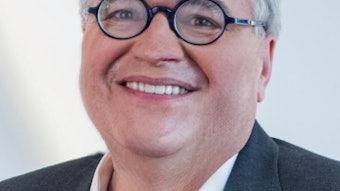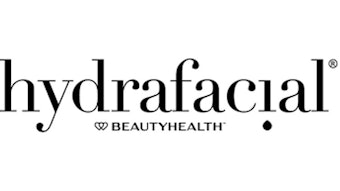- At more than 57%, the percentage of shoppers who identify themselves as frequent buyers of store brands is at an all-time high; 76% of consumers across all income levels plan to maintain their level of spend in private label.
- Non-beauty retailers have used private label as a launching pad into cosmetics and fragrance; although it’s not an easy transition, retailers continue to step outside their comfort zones to bring customers in their doors.
- As consumers becomes more sophisticated and the globe shrinks, it’s important to find emotional connections that consumers will respond to.
In a market where value has become a key factor in any purchase, private label is enjoying an enviable position. According to the Private Label Manufacturers Association (PLMA), private label now holds its strongest competitive position ever. This is especially true in European markets. In fact, private label now accounts for one of every two products sold in the U.K. and Switzerland.
In a series of reports on consumer attitudes and behavior toward store brands, PLMA has found that shoppers bought more store brands at the onset of the recession, even in categories where they were once loyal to national brands. Since then, buyers have continued to purchase more and more store brands and expect to keep doing so even after the economy rebounds. Research revealed that the percentage of shoppers who identify themselves as frequent buyers of store brands is at an all-time high, more than 57%, and 76% of consumers across all income levels who changed their shopping habits during the recession say they will continue to buy more store brands even as the economy returns to normal.
But the underlying strength of private label has been building for more than two decades, and that is not recession related. Private label developers are upping the ante on product development and providing increasingly sophisticated products that cater to the growing demand of consumers. Whereas private label was once a “generic” product in bland packaging, today we can see a fourth generation of private label beauty products, where clients such as Boots and Sephora are seeking out innovation from contract manufacturers.
“Private label has now joined the innovation game,” said Karen Young, founder of The Young Group. “Not only are they surviving but they are thriving, because they are no longer the lowest common denominator.”
Perceptions of private label are changing and confidence is rising. The very nature of the private label industry has changed. As the industry evolves, private label manufacturers, marketers and retailers are all looking to capitalize.
Outside the Box
Even non-beauty product retailers have used private label as a launching pad into cosmetics and fragrance, though it’s not an easy transition for retailers not in the beauty biz. Retailers from Ann Taylor to Gap to Top Shop have attempted expanding into the cosmetics arena through private label, with varying success. But retailers are making the move, stepping outside their comfort zones to bring customers in their doors.
Payless ShoeSource, a U.S. retailer well-known for affordable footwear, announced an alliance with Maesa Group to create a collection of new beauty and body care products, available exclusively in 1,500 Payless ShoeSource stores, in autumn 2010. Payless launched with nearly 100 items from two collections: Unforgettable Moments and Zoe & Zac. The Payless Beauty collection includes signature fragrances, as well as color items for eyes, lips and nails.
The launch follows on the 2009 success in extending the retailer’s on-trend accessory offering in its stores, which now features a complementary accessory collection each season—including jewelry, hats and gloves and handbags. “Payless’ entry into beauty was a natural extension of the Payless accessory offering,” said Mardi Larson, Payless spokesperson. “We believe it’s the new fashion accessory, important to finishing off a women’s personal look.”
Maesa, a comprehensive turnkey service, has managed this new category for Payless from start to finish, with a dedicated team working very closely with Payless to analyze sales, develop the right product mix and be on trend.
For retailers to be successful in private label beauty sales, they have to keep true to their retail brand and mimic the image consumers are already familiar with and trust, even if it’s outside the box.
The goal in developing Payless’ beauty line was to give customers access to fashionable and high-quality fragrance and beauty products in line with the retailer’s price point of difference already established for shoes and accessories. For its beauty products, that price point of difference is as low as $2.99 an item, with nearly 90% of the line available for less than $10 an item. “We always considered beauty as fashion and knew that the market was in demand for fashionable and affordable products,” explained Mager. “We decided to focus on cosmetics and wanted to try fine fragrance at a very affordable price.”
And fragrances happen to be the most successful products so far, exceeding both Maesa and Payless’ expectations. In response, a new fragrance brand called SXY (pronounced “sexy”) was introduced in April 2011, in addition to color refreshes to the beauty collection, which will be available through 3,000 doors in June 2011. And Payless plans to foster evolution of the brand.
“When it comes to cosmetics and beauty, consumers always want to feel innovation and effectiveness,” said Sophie Thiolas, director of communication, Maesa. “We always need to bring on the table something new, whether it’s the packaging, design, the formula or the story.” This is especially true when thinking outside the box, such as a retailer like Payless, because there is not momentum to build from as there is with a national cosmetic brand.
Maesa has an innovation “cell” within its innovation department to design product lines upstream. “Its purpose is to have a very, very wide view concerning innovation,” continued Thiolas. “We analyze several industries—including health, well-being, food products and fashion—for specific actions, from raw materials and suppliers to techniques and concepts, to develop novelty in the product lines we create for our clients.”
A New Kind of Innovation
Stronger retailer-manufacturer partnerships and greater investments in new product development and innovation are essential if store brands want to keep the big market share gains they achieved during the recession and lay the foundation for even more growth as the economy returns to normal, according to the PLMA Store Brands 2010: Post-Recession Strategies for Private Label report. “Store brand marketers will need to double down on product development and innovation,” the report advises.
In order for store brands to get to shelf with innovations faster, better and more cost-effectively, they are faced with the challenge to think differently, more unconventionally and from a new perspective. At the same time, name brands also must avoid stock solutions, driving innovation across the industry. “Private label products that can be stronger, creating strong co-brandings, proposing unique universes and having very complex packaging and formulations,” explained Maesa’s Thiolas. “As private label ranges are going out of their initial distribution channel, they oblige national brands to constantly innovate to keep their position.” The goal for each should be to seek opportunities to differentiate from one another, speak to their unique positioning and brand character, and improve the consumer experience.
As such, a new generation of private label manufacturer is forming exclusive, strategic alliances with several technology centers to bring a think tank approach to personal care formula and delivery system innovation, toward the goal of creating truly differentiated products. Leading Edge Innovation believes this formula/delivery system innovation and trend-driven product positioning, coupled with a strategy to provide full production capability, will offer unprecedented speed to market and competitive cost of goods.
The company presents differentiated, trend-driven, personal care products to the decision-makers at finished goods marketers, using a turnkey order fulfillment process. With help from The Young Group, which evaluates what is driving consumers through trend analysis, Leading Edge Innovation evaluates where the market is going and anticipates the impact of consumer trends on the beauty market. The opportunity is for marketers to take unique products into the market, to supplement their lines and keep business relevant. “We are always looking to bring different ideas and approaches to the market,” said James Wilmott, chief scientific officer, Leading Edge Innovations. “If you are looking for the same thing that is already on the shelf and duplicate it, you can go to any contract manufacturer with a large library of standard products.” Wilmott calls it aesthetic mediocrity. But in today’s marketplace, it’s necessary to differentiate, to distinguish your product and establish brand loyalty.
The Young Group produces a report that provides marketers with off-center indicators and approaches for predicting what’s influencing consumers, from a variety of industries. “We study consumers from a wide view, without preconceived notions,” Young explained. “If you are not looking at where consumers are spending their money in general, how can you draw conclusions about what they are doing in beauty?”
Her philosophy is that if all ideas come from beauty, everyone will have the same ideas. “I want to fight getting stuck in a rut as much as I can,” she said.
One such example is a project Young is conducting for a large beauty company. She is evaluating texture trends in North America, Europe and Asia. Her search includes global food trends, textures in prepared foods, street foods and candy. How does it differ from country to country? Are textures changing; if so, why? And how can it benefit the product story?
As consumers become more sophisticated and the globe shrinks, it’s important to find emotional connections that consumers will respond to, what is part of the consumer experience on a daily basis. “I look for parallels, not fits,” said Young. “It sounds like a bit of a stretch, but it makes sense when you are talking about global consumer drivers. It works because there is emotion, passion in both beauty and food.” And that is where new ideas come from: innovation.
Future of the Industry
While consumers may be responding positively to private label’s potential, the market still remains marginal compared to branded beauty products. According to preliminary estimates from Euromonitor International, the global beauty and personal care private label market actually slowed in 2010, growing 5.7% to reach $9.15 billion.
Growth in 2009 was 8.4% ($8.66 billion). Furthermore, the global private label market represented just 2.5% of the overall beauty market in 2010.
But with altered consumer purchasing/spending habits and preferences and increasingly sophisticated private label offerings, private label’s share of the market will surely increase. Add to this the growing number of established brands finding outsourced manufacturing to be a very feasible option and an increasing number of niche companies/small brands that have never been interested in operating labs or manufacturing sites that now are, and it’s evident contract manufacturing’s role in the future of the industry is significant.
Sara Mason is a freelance writer based in the Chicagoland area. She was previously managing editor of GCI magazine.










